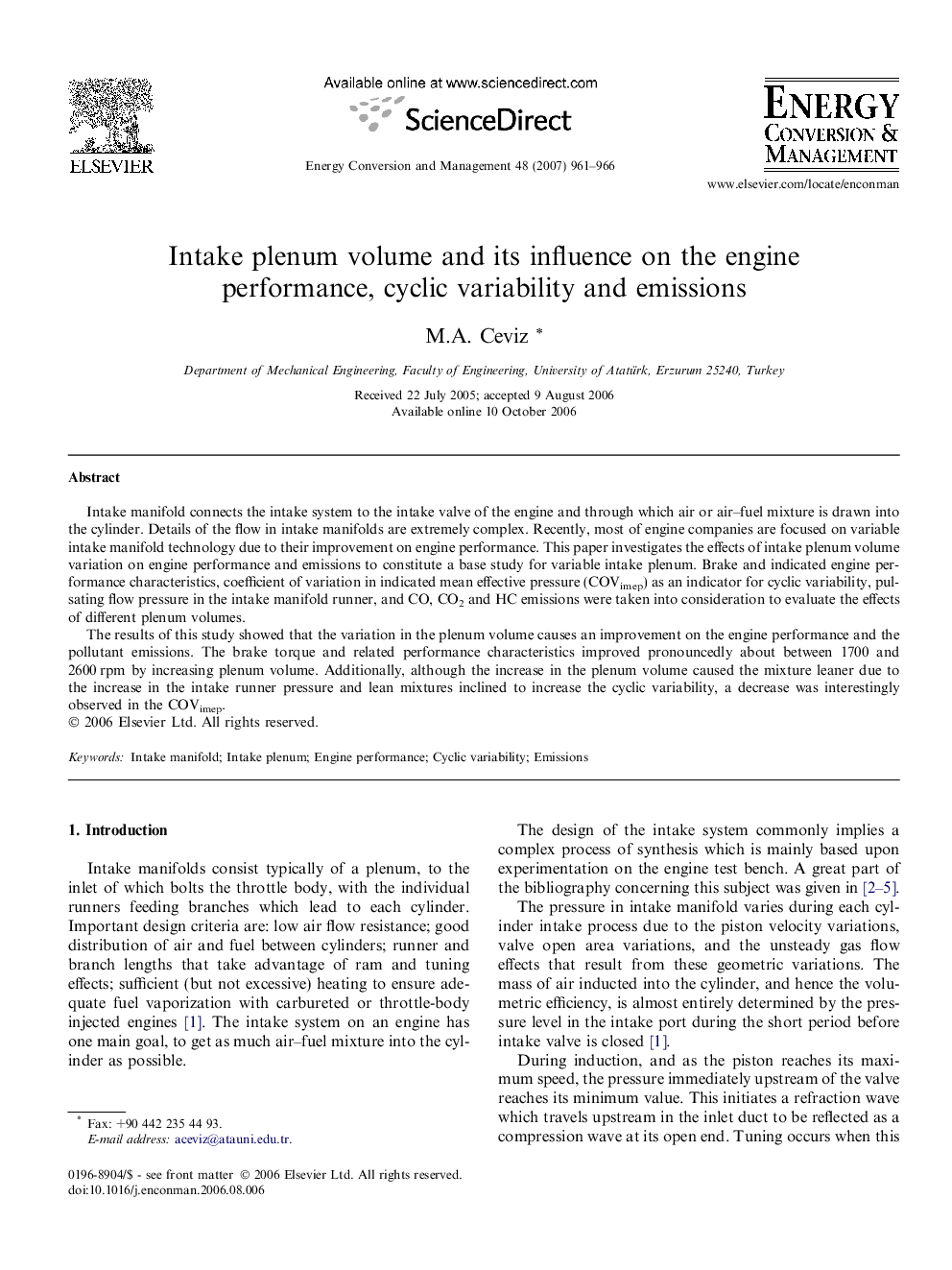| Article ID | Journal | Published Year | Pages | File Type |
|---|---|---|---|---|
| 766565 | Energy Conversion and Management | 2007 | 6 Pages |
Intake manifold connects the intake system to the intake valve of the engine and through which air or air–fuel mixture is drawn into the cylinder. Details of the flow in intake manifolds are extremely complex. Recently, most of engine companies are focused on variable intake manifold technology due to their improvement on engine performance. This paper investigates the effects of intake plenum volume variation on engine performance and emissions to constitute a base study for variable intake plenum. Brake and indicated engine performance characteristics, coefficient of variation in indicated mean effective pressure (COVimep) as an indicator for cyclic variability, pulsating flow pressure in the intake manifold runner, and CO, CO2 and HC emissions were taken into consideration to evaluate the effects of different plenum volumes.The results of this study showed that the variation in the plenum volume causes an improvement on the engine performance and the pollutant emissions. The brake torque and related performance characteristics improved pronouncedly about between 1700 and 2600 rpm by increasing plenum volume. Additionally, although the increase in the plenum volume caused the mixture leaner due to the increase in the intake runner pressure and lean mixtures inclined to increase the cyclic variability, a decrease was interestingly observed in the COVimep.
